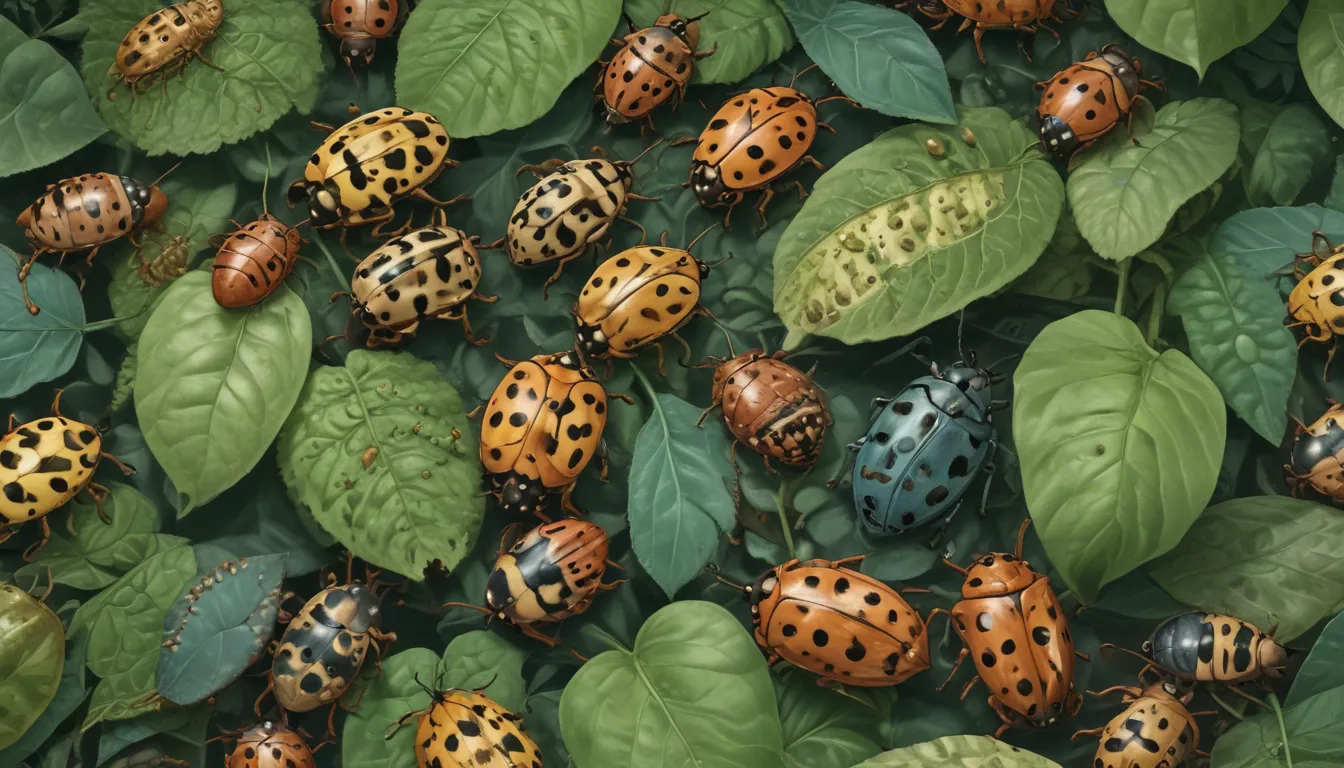How to Identify and Control Mexican Bean Beetles: A Gardener’s Guide

As a compassionate gardener, I strive to appreciate all creatures in my garden, big and small. However, when it comes to Mexican bean beetles, also known as Epilachna varivestis, my patience is truly put to the test.
These pesky bugs and their larvae are known to wreak havoc on various types of bean plants in home gardens, particularly in the scorching summers of East Tennessee.
If you’ve ever had a flourishing crop of beans only to have it decimated by Mexican bean beetles, then you know the frustration and disappointment that comes with it.
But fear not, dear gardener! In this comprehensive guide, we will delve into the world of Mexican bean beetles, with tips on how to identify, control, and prevent these harmful pests from causing damage to your beloved plants.
What You’ll Learn
- What Are Mexican Bean Beetles?
- Biology and Life Cycle
- Identification: How to Tell Mexican Bean Beetles and Ladybugs Apart
- Organic Control Methods
- Cultural
- Physical
- Biological
- Organic Pesticides
- Chemical Pesticides
- Prevention Tips
What Are Mexican Bean Beetles?
Mexican bean beetles, Epilachna varivestis, are a type of ladybug that feeds on bean plants during both their adult and larval stages.
Despite their name, these beetles are not limited to just beans. They are also known to attack other legumes like alfalfa, clover, as well as foliage from eggplants, okra, and squash.
The adult beetles have the ability to fly in search of food, making it crucial to be vigilant in spotting their larvae on potential host plants in your vegetable garden.
Mexican Bean Beetle Biology and Life Cycle
Mexican bean beetles overwinter in soil or plant debris, emerging in the spring to start feeding on leaves.
Adult beetles will lay clusters of eggs on the undersides of leaves, which can hatch in just a week under warm conditions.
Upon hatching, the larvae pupate on the undersides of leaves and are the most destructive at this stage, capable of skeletonizing plants within days.
Identification: How to Tell Mexican Bean Beetles and Ladybugs Apart
One common mistake made by gardeners is mistaking Mexican bean beetles for their harmless ladybug relatives due to their similar appearance.
Mexican bean beetles can be identified by their orange-red bodies with 16 black spots, which darken with age. The larvae are larger than the adults and appear as yellow, spiny larvae.
To differentiate between the beneficial ladybugs and the harmful bean beetles, look for distinct characteristics such as head color and larvae appearance.
Organic Control Methods
When it comes to dealing with Mexican bean beetles, it’s best to opt for organic control methods before turning to harsh chemicals. These methods are not only safer for beneficial insects but can also benefit your plants and overall harvest.
Cultural
- Use trap crops to draw in adult beetles away from your main bean plants.
- Uproot infested trap crops and discard them to eliminate an entire generation of beetles.
Physical
- Use row covers to physically block eggs and larvae from infesting bush bean plants.
- Regularly inspect plants for eggs and larvae, removing and disposing of them accordingly.
Biological
- Introduce beneficial insects such as green lacewings or ladybugs to prey on Mexican bean beetles naturally.
Prevention Tips
To prevent Mexican bean beetles from infesting your plants, follow these tips:
- Grow healthy plants that can withstand beetle damage.
- Rotate crops regularly to prevent overwintering of beetles.
- Plant varieties of beans that are less appealing to Mexican bean beetles.
By following these prevention tips, you can protect your plants and increase your harvest while keeping harmful pests at bay.
In conclusion, Mexican bean beetles may pose a threat to your bean plants, but with proper identification, control methods, and prevention tips, you can successfully combat these pests and enjoy a bountiful garden harvest.
Do you have any tips for dealing with Mexican bean beetles in your garden? Share your insights in the comments below!
For more information on growing legumes in your garden, check out these helpful guides:
- 31 of the Best Companion Plants for Beans
- Tips for Growing Green Beans in Fall
- Plant Green Beans and You’ll Feel like a Gardening Pro
Remember, a little knowledge and proactive gardening can go a long way in keeping your plants healthy and thriving. Happy gardening!





